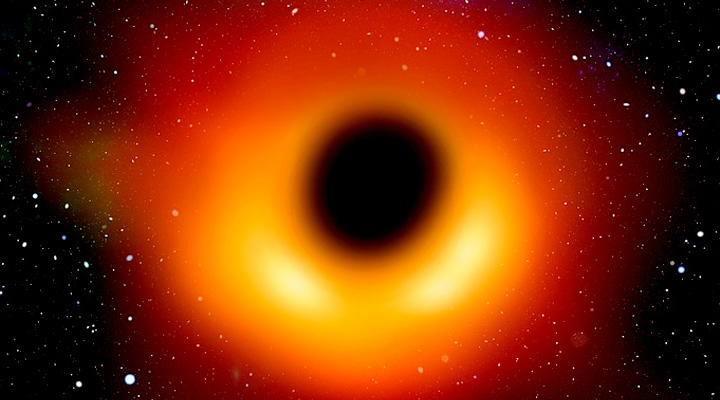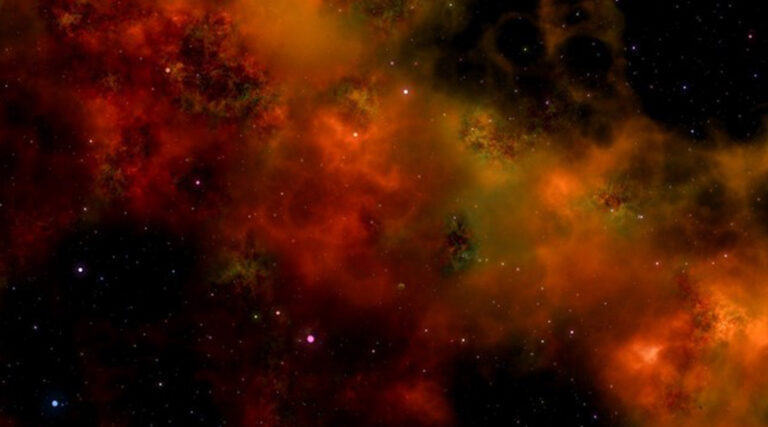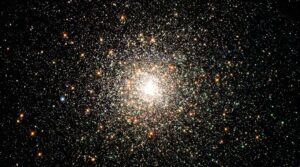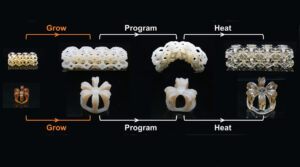Finding the Universe’s first black holes with the help of Hawking radiation.
Astronomical observations of such cosmic phenomena as higher-than-expected velocities of star motion and certain properties of the cosmic microwave background point to the idea that approximately 85 percent of all matter in the Universe could be made up of so-called dark matter. This mysterious, hypothetical substance does not absorb, reflect or emit light, hence its name.
There is no generally accepted theory of dark matter, but one of the most popular candidates for its constituents are black holes formed from density fluctuations in the primordial plasma, the state in which all matter existed in the first moments after the Big Bang. This suggested origin led to them being called primordial black holes.
In many cosmological models, the mass concentrated in plasma density fluctuations is much less than the masses of the stars that formed the younger and more familiar black holes, so primordial black holes are expected to be relatively light: their masses could be billions or even trillions of times less than the mass of the Earth. This makes it very difficult to observe individual black holes of this type by the gravitational lensing they cause, and by studying the accretion disks they may be surrounded by.
One of the signatures of primordial black holes that hopefully can be observed is the Hawking radiation they emit. Back in the 1970s, under some assumptions about the quantum properties of gravitational interaction, Stephen Hawking suggested that black holes should have a temperature and radiate photons and other elementary particles. A very important feature of black hole thermodynamics is that their temperatures are inversely proportional to their masses.
For example, a black hole of one solar mass (the mass of the Sun) has a temperature of only 60 nano-Kelvin (almost absolute zero), which is way lower that the temperature of the cosmic microwave background, so there is absolutely no chance to detect a radiation emitted by such a cold body. On the other hand, a primordial black hole a billion times lighter than Earth should have a temperature of several million Kelvin.
With this fact in mind, a team of physicists from the University of Chicago, Fermi National Accelerator Laboratory, and Stockholm University, publishing in Physical Review D., have studied the potential of future space telescopes to discover dark matter that could be concentrated at the center of our Milky Way galaxy if this entity is indeed composed of primordial black holes. The apparatuses the researchers considered are the All-sky Medium Energy Gamma-ray Observatory (AMEGO) and e-ASTROGAM, that are scheduled for launch into space in the late 2020s or early 2030s. Both space-based telescopes will detect gamma rays, whose photons are many orders of magnitude more energetic than that of visible light. If Hawking’s understanding of black hole thermodynamics is correct, then it is expected that black holes with the masses of interest to scientists will produce mainly photons of this type.
Physicists are interested in black holes with masses between about one billionth and one trillionth of the mass of the Earth, because too light primordial black holes would have evaporated by Hawking radiation by now, while too massive ones are expected to have a relatively low temperature and radiation power, which makes them difficult to detect.
The researchers simulated numerically the Hawking radiation from various possible spatial distributions of primordial black holes consistent with astronomical observations, and various portions of black holes in the total amount of hypothetical dark matter.
What they found was that if primordial black holes make up more than approximately one millionth of the total dark matter density in the galaxy, the telescopes will be able to detect them and to precisely measure their mass distribution. Such an accuracy is around two orders of magnitude better than that of the currently operating apparatuses — American satellites Voyager 1 and COMPTEL, and European INTEGRAL.
The results obtained by the researchers give hope that in about ten years we could be able to find out whether black holes radiate in the way Hawking predicted, and what dark matter – if it exists – is made of. If the AMEGO and e-ASTROGAM telescopes successfully detect the Hawking radiation from primordial black holes, this will significantly advance our understanding of both the evolution and structure of the Universe and the fundamental properties of quantum gravity.
Reference: C. Keith, D. Hooper, T. Lindend, and R. Liu, ‘Sensitivity of future gamma-ray telescopes to primordial black holes,’ Phys. Rev. D (2022), DOI: 10.1103/PhysRevD.106.043003
Feature image credit: geralt on Pixabay















+ There are no comments
Add yours